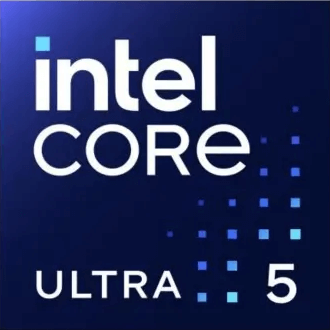Intel Core i3 5005U vs Apple M4 Pro 14 Core
We compared two laptop CPUs: Intel Core i3 5005U with 2 cores 2.0GHz and Apple M4 Pro 14 Core with 14 cores 4.52GHz . You will find out which processor performs better in benchmark tests, key specifications, power consumption and more.
Main Differences
Intel Core i3 5005U 's Advantages
Lower TDP (15W vs 46W)
Apple M4 Pro 14 Core 's Advantages
Released 9 years and 9 months late
Higher specification of memory (8533 vs 1600)
Larger memory bandwidth (273GB/s vs 25.6GB/s)
Higher base frequency (4.52GHz vs 2.0GHz)
More modern manufacturing process (3nm vs 14nm)
Score
Benchmark
Geekbench 6 Single Core
Intel Core i3 5005U
652
Apple M4 Pro 14 Core
+497%
3896
Geekbench 6 Multi Core
Intel Core i3 5005U
1295
Apple M4 Pro 14 Core
+1647%
22630
Passmark CPU Single Core
Intel Core i3 5005U
1145
Apple M4 Pro 14 Core
+300%
4587
Passmark CPU Multi Core
Intel Core i3 5005U
2017
Apple M4 Pro 14 Core
+1800%
38342
General Parameters
Jan 2015
Release Date
Oct 2024
Intel
Manufacturer
Apple
Laptop
Type
Laptop
x86-64
Instruction Set
ARMv9
Broadwell
Core Architecture
Apple M4
i3-5005U
Processor Number
-
BGA-1168
Socket
Apple M-Socket
HD Graphics 5500
Integrated Graphics
Apple M4 GPU (20-core)
Package
14 nm
Manufacturing Process
3 nm
15 W
Power Consumption
46 W
105 °C
Peak Operating Temperature
100 °C
CPU Performance
2
Performance Cores
10
4
Performance Core Threads
10
2.0 GHz
Performance Core Base Frequency
4.52 GHz
-
Efficiency Cores
4
-
Efficiency Core Threads
4
-
Efficiency Core Base Frequency
2.59 GHz
2
Total Core Count
14
4
Total Thread Count
14
20x
Multiplier
45
64 K per core
L1 Cache
192 K per core
256 K per core
L2 Cache
16 MB shared
3 MB shared
L3 Cache
-
No
Unlocked Multiplier
No
Memory Parameters
DDR3L-1600, LPDDR3-1600
Memory Types
LPDDR5X-8533
16 GB
Max Memory Size
-
2
Max Memory Channels
-
25.6 GB/s
Max Memory Bandwidth
273 GB/s
No
ECC Memory Support
No
Graphics Card Parameters
true
Integrated Graphics
true
-
GPU Base Frequency
500 MHz
850 MHz
GPU Max Dynamic Frequency
1800 MHz
-
Shader Units
2560
-
Texture Units
160
-
Raster Operation Units
80
-
Execution Units
320
-
Power Consumption
32
-
Graphics Performance
9.2 TFLOPS
Miscellaneous
2.0
PCIe Version
-
12
PCIe Lanes
-
SSE4.1, SSE4.2, AVX-2
Extended Instruction Set
-






